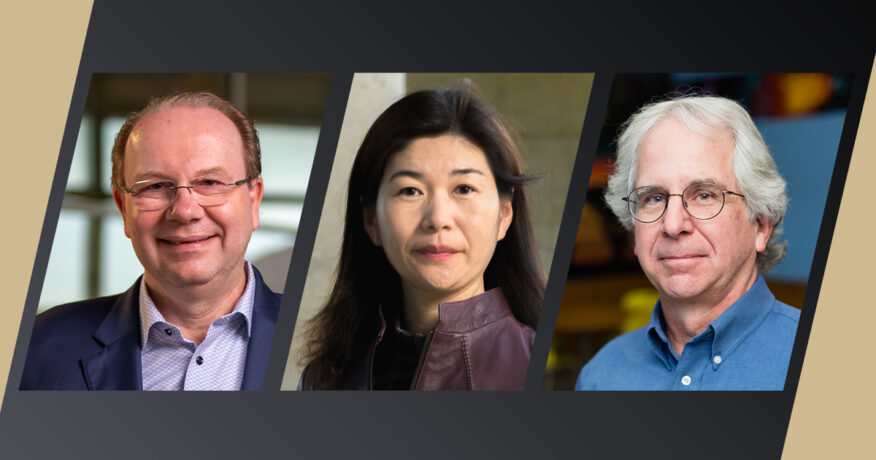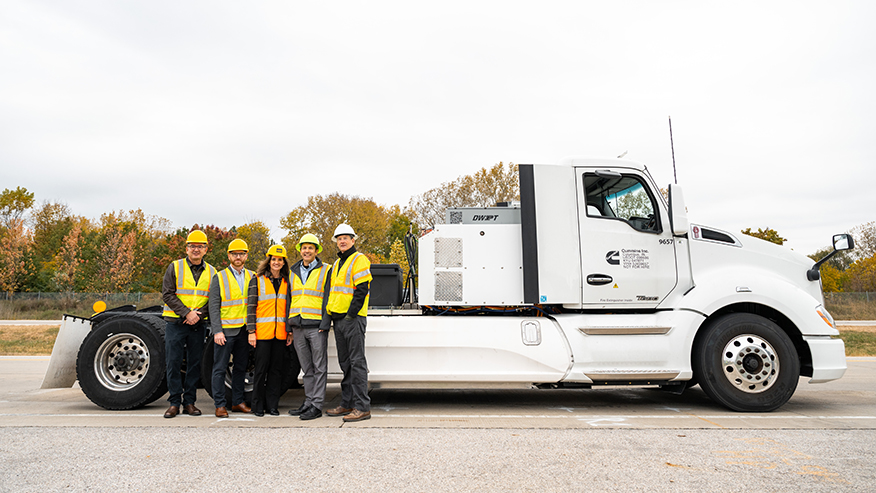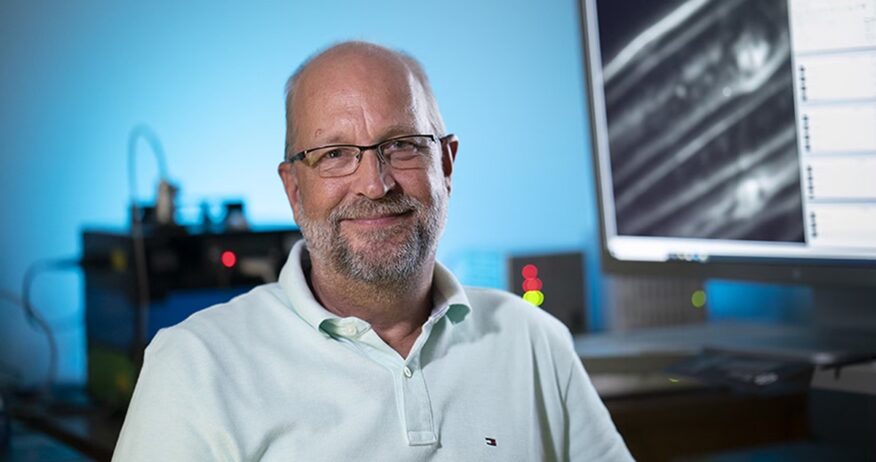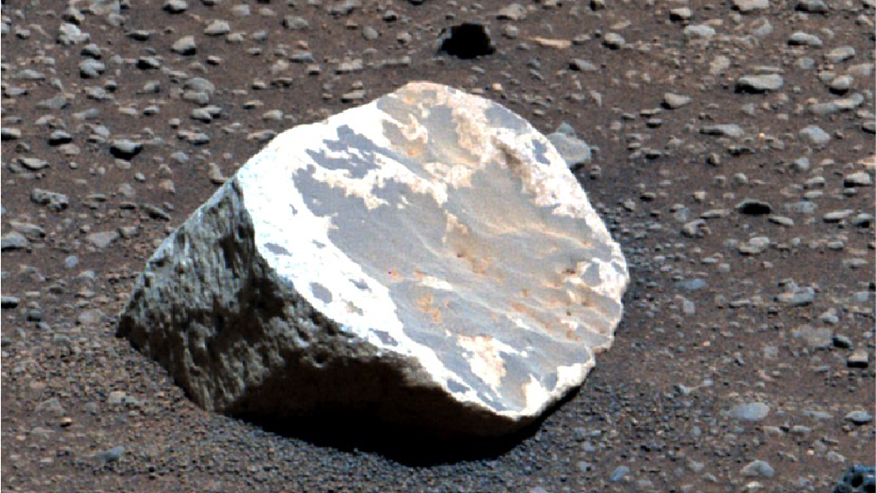Purdue researchers develop a new type of intelligent architected materials for industry applications
Purdue University civil engineers are testing materials for transportation, military and other real-world applications
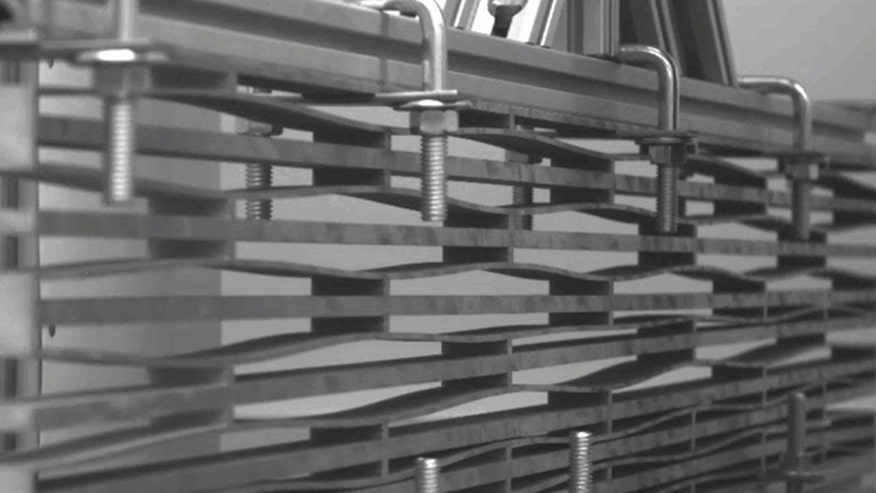
Products made with intelligent architected materials developed at Purdue University have the ability to change from one stable configuration to another stable configuration and back again. The technology is being tested in new aircraft runway mats, nonpneumatic tires and other applications. (Image provided)
Purdue University civil engineering researchers have developed patent-pending intelligent architected materials that can dissipate energy caused by bending, compression, torque and tensile stresses, avoiding permanent plastic deformation or damage, and may also exhibit shape memory properties that allow them to have actuation capacity.
Avoiding damage makes the material reusable and improves human safety and structure durability in products across several industrial sectors.
Pablo Zavattieri, the Jerry M. and Lynda T. Engelhardt Professor in Civil Engineering, leads the research team that has developed this new class of intelligent architected materials.
“These materials are designed for fully recoverable, energy-dissipating structures, akin to what is referred to as architected shape memory materials, or phase transforming cellular materials, known as PXCM,” Zavattieri said. “They can also exhibit intelligent responses to external forces, changes in temperature and other external stimuli.”
Intelligent architected materials such as these have a wide range of potential applications due to their unique properties.
“These materials can change from one stable configuration to another, making them versatile and valuable for various applications including earthquake engineering, impact-resistant structures, biomedical devices, sporting goods, building structures and automotive components,” Zavattieri said.
Versatility and scalability
Virtually any material, including polymers, rubber, concrete and more, can be utilized to make the Purdue intelligent architected materials as long as they are designed to remain in the elastic regime.
“While it’s true that more brittle materials present greater design challenges, consider this: One of my PhD students successfully crafted a single-unit cell using concrete, a material known for its brittleness in tension,” Zavattieri said. “Creating these intelligent materials is all about effective design, making material choices remarkably versatile.”
Zavattieri and his team also have proven the materials’ scalability.
“We have produced intelligent architected materials as large as 12 inches, which are ideal for applications like building and bridge construction to absorb and harness energy,” Zavattieri said. “Conversely, we have created materials with unit cells smaller than the thickness of a human hair. This scalability opens up a world of possibilities from macro to micro applications.”
Drawbacks of traditional lightweight cellular materials
Cellular or foam materials are characterized by a porous microstructure or interconnected beams, columns or trusslike structures, with both solid spaces and empty spaces that form a lattice or honeycomb arrangement. Examples found in nature include bone, cork, foam, honeycombs, sponge and wood.
“Manufacturers have applied the concept of cellular structures to create lightweight lattice structures in the aerospace industry, to enhance crash energy absorption in the automotive industry and to design protective packaging for delicate items in the transportation industry,” Zavattieri said.
He said most of these materials have a single stable configuration.
“Changes in the cellular geometry as a result of an applied load typically will be limited either by the desire to prevent permanent deformation or the fact that it is impossible to return to the original stable configuration,” Zavattieri said. “There is an unmet need for a material structure that has a more stable configuration.”
Zavattieri said the new intelligent architected materials developed at Purdue redefine the concept of cellular materials.
“We have engineered the topology of their inner building blocks, which are made of beams, columns, trusses and other elements,” he said. “They are able to bend, twist, buckle and deform in highly controlled and programmable ways. These precisely tailored deformations give rise to emergent properties such as enhanced energy absorption, increased work capacity, morphing capabilities and adaptability. These properties open up innovative possibilities for various applications.”
Zavattieri and his colleagues have applied the compliant nature of cylindrical shells to create the materials.
“Energy is dissipated via snap-through mechanisms, allowing for avoidance of plastic deformation,” he said. “Simulations were utilized to identify the relations between unit cell design parameters and deformation modes, and this knowledge was carried over to manufacture prototype specimens for validation. It was shown that energy dissipation and peak load capabilities could be optimized by changing ligament lengths and angles of inclination.”
Zavattieri’s research has been published in the peer-reviewed journals Engineering Structures, Extreme Mechanics Letters, Scientific Reports, Journal of Applied Mechanics, Matter, International Journal of Solids and Structures and Engineering Structures. His research has received funding from General Motors, ITAMCO (Indiana Technology and Manufacturing Companies), the National Science Foundation and the U.S. Air Force.
Aircraft runway mat applications
A collaboration between Zavattieri and ITAMCO has used metal 3D printing materials to develop new aircraft runway mats for temporary or expeditionary flight operations.
The lightweight 3D printed panels consist of a carbon-fiber reinforced metal composite, allowing them to have high stiffness while remaining lightweight. This panel system is an alternative to conventional AM-2 panels and offers improved longevity and mechanical properties. Applications of this technology include rapid deployment of structures or runways for defense, public health and natural disaster response.
Zavattieri and his team validated the lightweight 3D printed panels through field tests.
“The objective of the research is to develop a robust sheet or roll technology that serves as an alternative to the AM-2 mat,” Zavattieri said. “AM-2 matting has served the U.S. military well since the Vietnam War, but the materials and technology in the ITAMCO-led research project will offer many benefits over AM-2 matting.”

Zavattieri said a portable and lightweight airfield mat must be easy to install and store yet capable of withstanding the stresses of repeated aircraft takeoffs and landings.
“Products made with PXCM geometry have the ability to change from one stable configuration to another stable or metastable configuration and back again,” Zavattieri said. “This means the new runway mat could potentially heal itself, resulting in a much longer life span than a runway made with AM-2 matting. Another benefit is that debris on the runway will not hamper the runway’s performance with our technology.
“In testing, these mats were capable of withstanding over 5,000 landing and takeoff cycles over a 60-day period while showing no signs of failure. Current conventional runway mats fail at approximately 1,500 cycles. This durability means fewer replacements of the mats, which require fewer financial resources.”
Nonpneumatic tire applications
Zavattieri said the U.S. Army has identified a critical need for the development and deployment of nonpneumatic tires, or tires that are not supported by air pressure. As a result, nonpneumatic tires are not prone to punctures or leaks.
Zavattieri and his research team have developed a computer-based model supporting the use of the Purdue phase transforming cellular materials in the design of a nonpneumatic tire as specified by the Tire and Rim Association standards. He said the results demonstrate feasibility, through modeling and simulation, of PXCM as a dynamic, elastically deformable solution for the design of nonpneumatic tires (NPTs).
“This effort has shown that PXCMs can provide good performance on paved surfaces and provide good adaptability to the off-road environment,” Zavattieri said. “For military vehicles of interest, tires are designed to mitigate different-sized obstacles, loading conditions and variable terrain typically encountered in theater like sand, mud, gravel and snow. Modeling and simulation of designs demonstrate a PXCM-based nonpneumatic tire is capable of meeting performance requirements for both on-highway and off-road applications over varying load conditions and can resist loss of mobility due to material loss, up to 20%, resulting from ballistic/explosive threats or road debris. Model results suggest PXCM-based NPTs have the potential to extend vehicle capability and increase the probability of mission completion despite having sustained damage.”
Zavattieri disclosed the phase transforming cellular materials and their applications to the Purdue Innovates Office of Technology Commercialization, which has applied for patents to protect the intellectual property. Industry partners interested in commercializing the materials for the marketplace should contact Dipak Narula, assistant director of business development and licensing in physical sciences, at dnarula@prf.org about 2018-ZAVA-68252, 2019-ZAVA-68691, 2020-ZAVA-69072 and 2022-ZAVA-69900.
About Purdue University
Purdue University is a public research institution with excellence at scale. Ranked among top 10 public universities and with two colleges in the top 4 in the United States, Purdue discovers and disseminates knowledge with a quality and at a scale second to none. More than 105,000 students study at Purdue across modalities and locations, with 50,000 in person on the West Lafayette campus. Committed to affordability and accessibility, Purdue’s main campus has frozen tuition 12 years in a row. See how Purdue never stops in the persistent pursuit of the next giant leap, including its first comprehensive urban campus in Indianapolis, the new Mitchell E. Daniels, Jr. School of Business, and Purdue Computes, at https://www.purdue.edu/president/strategic-initiatives.
About Purdue Innovates Office of Technology Commercialization
The Purdue Innovates Office of Technology Commercialization operates one of the most comprehensive technology transfer programs among leading research universities in the U.S. Services provided by this office support the economic development initiatives of Purdue University and benefit the university’s academic activities through commercializing, licensing and protecting Purdue intellectual property. In fiscal year 2022, the office reported 157 deals finalized with 237 technologies signed, 379 disclosures received and 169 issued U.S. patents. The office is managed by the Purdue Research Foundation, which received the 2019 Innovation and Economic Prosperity Universities Award for Place from the Association of Public and Land-grant Universities. In 2020, IPWatchdog Institute ranked Purdue third nationally in startup creation and in the top 20 for patents. The Purdue Research Foundation is a private, nonprofit foundation created to advance the mission of Purdue University. Contact otcip@prf.org for more information.
Writer/Media contact: Steve Martin, sgmartin@prf.org
Source: Pablo Zavattieri, zavattie@purdue.edu
